Groove Synthesis 3rd Wave 8M: Premium Wavetable Synth Now Affordable – Review!
The wavetable monster is now in a smaller but no less powerful package.
Groove Synthesis’ luscious wavetable synth is now available in a more affordable form factor. We check out if the 3rd Wave 8M is still as magical despite the decrease in hands-on control. (Spoiler alert: Oh my God, yes!)
Groove Synthesis 3rd Wave 8M Review
Groove Synthesis 3rd Wave 8M: The Highlights
- The full 3rd Wave sound engine with patch compatibility with the other two models
- Eight voices and bi-timbral operation with two independent parts
- Two filters: an analog lowpass filter and digital SEM-style state variable filter
- Multiple synthesis types with two types of wavetables, virtual analog, linear FM, and sampling
- Seven-inch color display plus six soft knobs
- Rackmountable desktop format
All Hail the Wavetable
A few years ago, on a trip into Tokyo, I stopped by a famous synth store and spent the afternoon trying everything out, used and new. Far and away, the two instruments that most impressed me were the Oberheim OB-X8 and Groove Synthesis 3rd Wave. Although very different in sound, they’re both inspired by classic synths (big Obies for the former, the PPG Wave for the latter) and – most impressive for me – they both possess a sonic richness that is almost startling in its profundity.
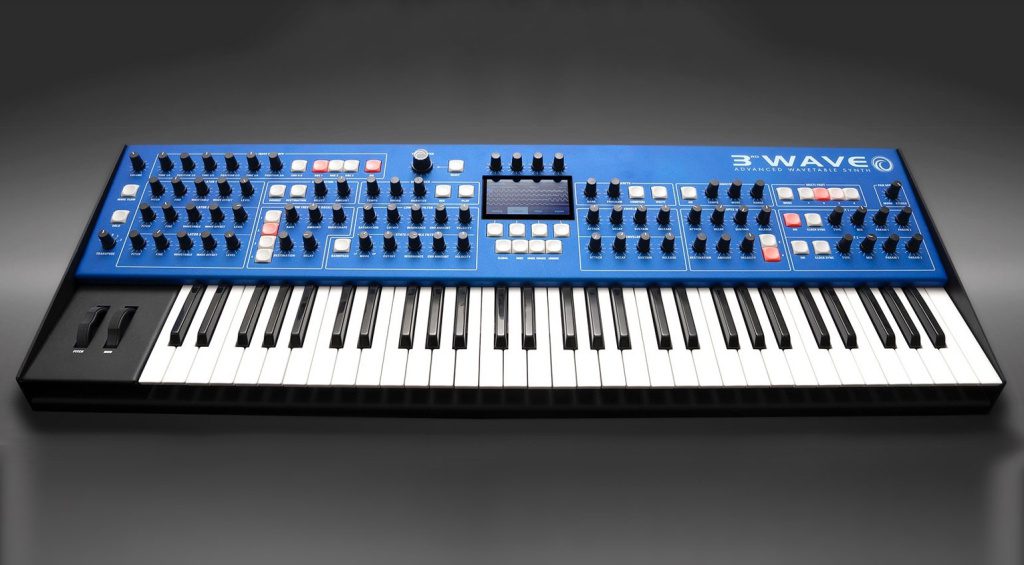
They’re also both expensive, putting their power out of the hands of most workaday musicians. Oberhim addressed this with the TEO-5 and Groove Synthesis has now made its own masterpiece available at a more affordable price point in the 3rd Wave 8M, a desktop version that loses some hands-on control, layers, and voices in the process.
Does the 8M still have that 3rd Wave spark and spirit that impressed me so much on that day in Tokyo? The short answer is yes. The long answer is also yes, but longer…
What’s Changed?
Before we get into the nitty-gritty, it could be helpful to address just what’s changed in the transformation from big blue keyboard to the desktop box that is the 8M. (Note that the 8M is different from the 3rd Wave Desktop Module, which is much closer to the workflow of the original.)
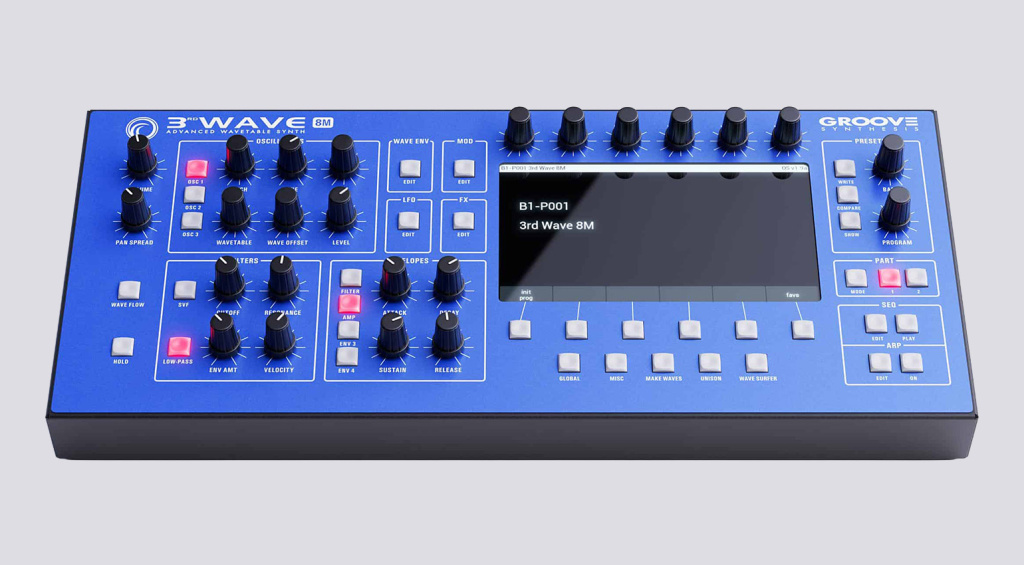
As you might guess from the name, the 3rd Wave 8M has eight voices. This is a significant decrease from the 24-voice original, also resulting in a reduction of timbral layers from four to two (as well as to related outputs on the back). However, the overall synthesis architecture has remained the same, meaning any presets that you make on the larger models will translate perfectly to the 8M (just minus two layers).
And, because of real-estate constraints, the 8M has fewer knobs and buttons than its bigger siblings. To aid in programming, however, it has gained a bigger screen as well as two more soft knobs for getting around the operating system. 3rd Wave has done a remarkable job at making the best of a potentially bad situation here, which I’ll get into later.
Setting the Wavetable
If you hadn’t already cottoned on by the name and colorway, the 3rd Wave is a modern take on the PPG Wave series of wavetable synths from the 1980s. And while all of the 3rd Wave models can do an incredible job at recreating the sound and feel of Wolfgang Palm’s legendary instruments, they’re much more than just clones, with a variety of synthesis engines that take it beyond what the original was capable of.
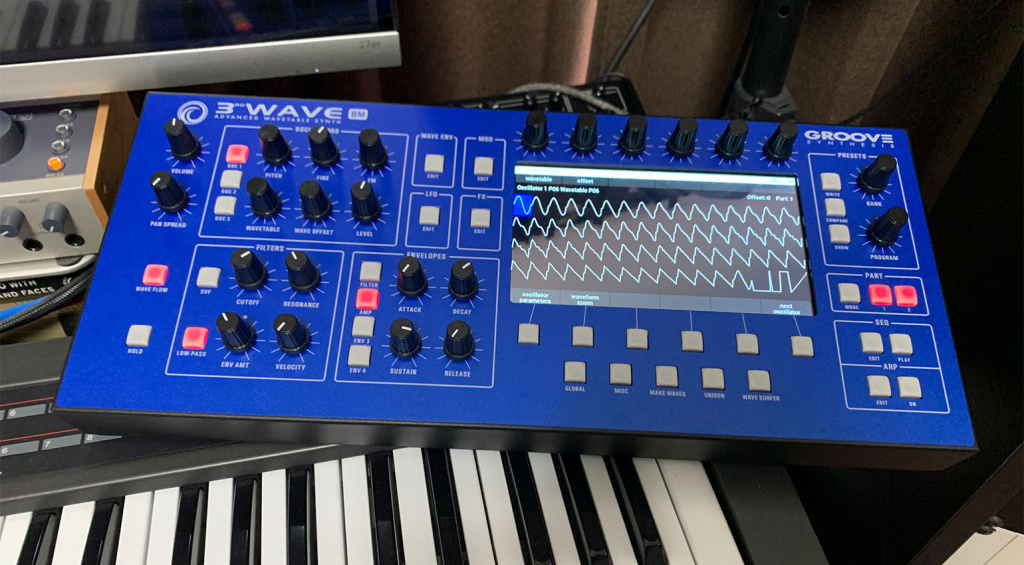
First off, the 3rd Wave (and that includes the 8M) is a three-oscillator synth, with each oscillator able to run 64-position classic and modern wavetables as well as virtual analog and sampling engines, with linear FM and oscillator sync also in the mix. Let’s look at each of these synthesis engines in turn, starting with the classic wavetables.
If you’re a fan of ‘80s synth pop, you’ve no doubt heard the PPG Wave. That digital sound with its telltale aliasing is like candy for my ears, and the 3rd Wave can reproduce it gloriously. You get all of the classic wavetables as well as the quirks that came with them. I won’t get into those now, but suffice to say that if you want to reproduce the limitations and head-scratchingly bizarre architecture choices of the original, you certainly can.
Groove Synthesis has also thrown in the original Sequential Circuits Prophet VS waveforms, which are also delightfully crunchy – and yes, you can choose to run an oscillator as a single-cycle waveform player if you wish, recalling not only the VS but also hybrid machines like the Korg DW-8000 and Kawai K3.
Want to make something a little more modern-sounding? You can, as the 3rd Wave features a clutch of gorgeous, modern 96kHz wavetables, as well as the ability for you to import your own. The Wave Flow function, which lets you smooth out the waveforms and wavetable motion, is handy for modernizing old-school waves.
Virtual (Analog) Insanity
If the sound engines stopped there, Groove Synthesis’s synth would still be a formidable instrument, but they don’t. The 3rd Wave 8M also includes virtual analog, capable of outputting seven different waveforms, including the usual suspects like sawtooth, square, triangle, and sine, as well as supersaw and noise. These go a long way towards thickening up the sound, and can sound shockingly analog, especially when you get the lowpass filter involved (more on that later).
Sampledelic Addition
A later addition to the 3rd Wave OS was sampling, which came along in version 1.8 and expanded the instrument with 35 seconds of sample time. Although samples are mono-only, the 3rd Wave is a true sampler, with not only USB sample import but an audio-in jack on the rear and comprehensive sample editing in the operating system. You can load up to eight samples per slot, allowing for things like drum kits, as well as a variety of bit and sample rates for lo-fi sounds.
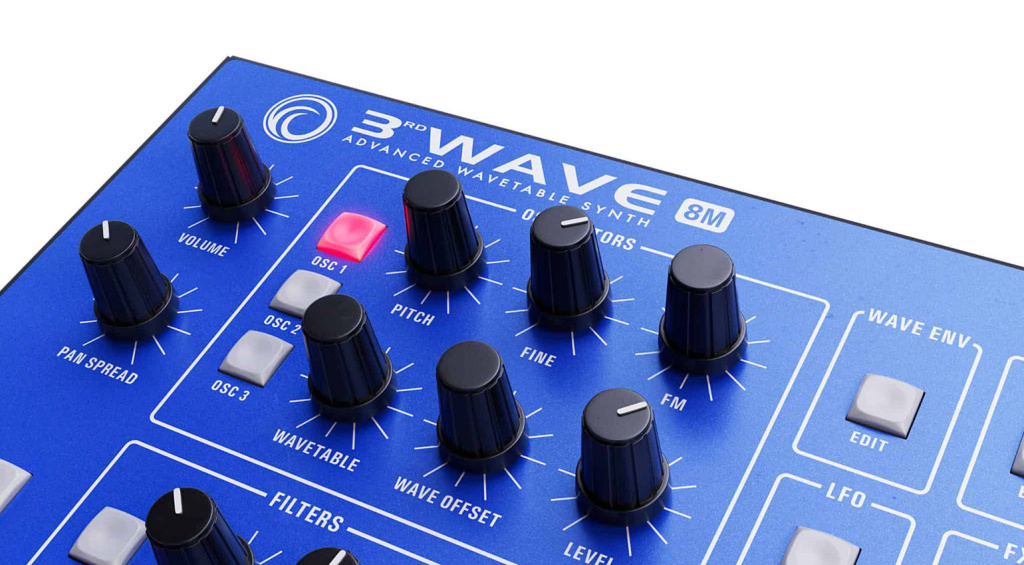
While it’s clearly not the main focus, the fact that you can layer samples under the wavetables for complex timbres is very cool.
Oh My Filter!
I mentioned earlier how analog the 3rd Wave can sound when it wants to, and that’s down, I suspect, to the 24dB/Oct analog lowpass filter. The Dave Rossum-designed 2140, which was also in the first two revs of the Prophet 5, does a great job of tempering the digital artifact excesses of the original PPG wavetables as well as beefing up the virtual analog and sample engines. And speaking of beef, the lowpass filter also offers analog drive as well as resonance compensation, so you don’t lose the low end when squelching out.
Actually, the 3rd Wave has two filters. Arranged in series, there’s a digital SEM-style state variable filter before the lowpass. Capable of sweeping from low through notch to high, with a selectable bandpass mode as well, it can contribute a lot to the tone shaping, especially when you get modulation involved.
Modulation, Effects, and More
Speaking of modulation, the 3rd Wave (and that includes the 8M, of course), is particularly well-endowed in the mod department. There are dedicated five-stage envelopes (ADSR with an onset delay) for the amp and filter, plus two additional ones with looping; four LFOs; plus a deep modulation matrix. Synthesists will surely fall in love with the modulation capabilities of the 3rd Wave. When you consider all that you can do with MPE and modulation, synthesis with the 3rd Wave 8M gets really exciting.
As for effects, while the 3rd Wave does offer two effects slots per layer, including delays, reverbs, distortion, and modulation, it’s not nearly as awe-inspiring as the rest of the instrument. While they sound lovely, I somehow expected more variety in the effects. I realize that this is a strange complaint, whining that the effects aren’t awesome enough, but when everything else is above and beyond, I do feel it’s valid.
Lastly, there are a number of extras that add to the 3rd Wave synthesis experience, including an arpeggiator and a surprisingly deep sequencer complete with song mode and parameter recording. And, with each part having its own arpeggiator and sequencer, you can get some really dynamic patches happening. Throw in the Pan Spread function, which moves voices around the stereo spectrum, and you can create some seriously dynamic sounds.
Working With the Screen
Much of what we’ve covered here is not special to the 3rd Wave 8M. After all, the new desktop synth has all of the same parameters as the larger models, just constrained to eight voices and two parts. Where it does differ, however, is in the layout of the front panel, specifically in the arrangement of knobs and the screen.
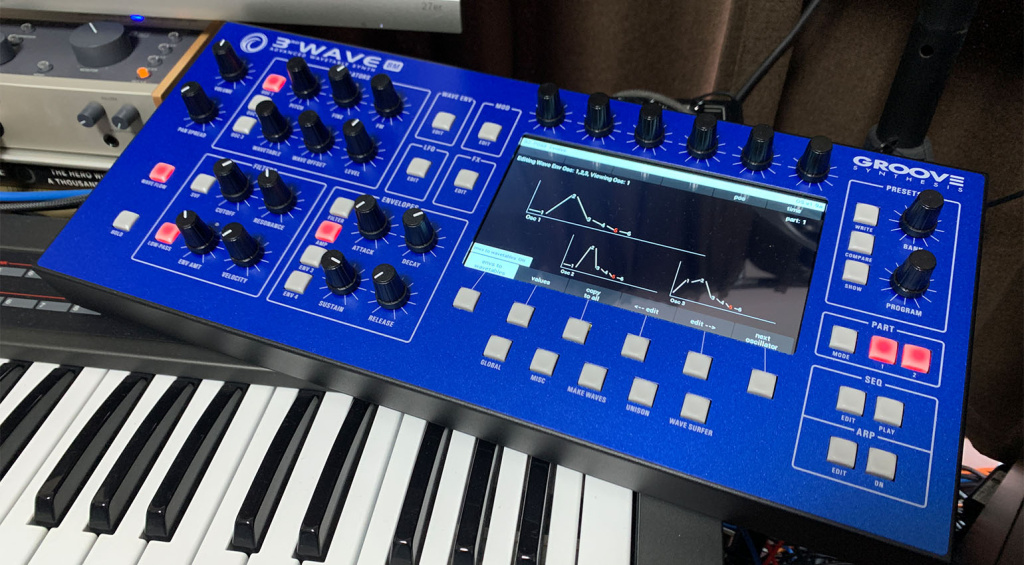
Whereas the keyboard version is largely one knob per function, the 3rd Wave 8M has to be much more judicious in its controls. So rather than having separate sections for each oscillator, you get one with buttons to select between the three. Same with the filter section and envelopes. Everything else is relegated to work on the screen.
For some, this reliance on the display may be a deal-breaker. However, I actually love it. The screen is much bigger than on the other models, with seven inches of real estate to work with. This visual element makes understanding some tricky concepts, like the wave envelope – an integral part of PPG-style wavetable synthesis – a snap to understand. It’s also amazing having all 64 offset positions in a wavetable visible at once.
In most cases, the lack of controls doesn’t feel hindering at all, being incredibly intuitive and ergonomic. The one parameter that does tend to suffer, however, is the Wave Surfer. A function that lets you cycle through the wavetables of all of the oscillators simultaneously, it has its own knob on the other models; on the 3rd Wave 8M, however, you have to press a button to access it on the screen. It ends up feeling more like an afterthought than the star feature that it is on its siblings.
In Conclusion: Catch a Wave
My opinion of the 3rd Wave hasn’t changed since I was first wowed by the sound in Tokyo. And while the full-size keyboard model is indeed impressive, I actually prefer the new 3rd Wave 8M model. My studio is small (I live in Japan, after all), and it’s already packed with keyboards. Having something compact but also ergonomically designed is the perfect solution for me – and, I suspect, for many others too.
The 3rd Wave is, simply put, a modern classic. It takes a nostalgic concept (the PPG Wave) and runs with it, turning it into a very capable and deep modern synthesizer. And, although it’s still on the expensive side compared to some other synths, it’s premium through and through. The build quality is excellent, and that screen just delights the eye. I love it so much.
If all you want is a PPG Wave clone, the Behringer Wave may be more your speed, or even the Waldorf plugin version. But if you’re after something deeper and frankly more impressive, the 3rd Wave 8M is a beautiful instrument with enough power to keep you occupied for years to come. And, with the frequency that Groove Synthesis updates the thing, its features may even outpace your ability to master it.
Pros and Cons
Pros
- Gorgeous sound
- Multiple sound engines
- Plenty of modulation
- Screen is a joy
- Amazing build quality
- Updates keep it fresh
Cons
- Still a little pricey
- Wave Surfer needs more love
- Would love some more effects
Groove Synthesis 3rd Wave 8M: Pricing and Availability
The Groove Synthesis 3rd Wave 8M is available from Thomann* for $1959 / £1759 / €1999. The box includes the main unit, paper manual, external power supply, and rack ears.
More Information
*Note: This article contains advertising links that help us pay for this site. Don’t worry: the price for you will always be the same! If you buy something through these links, we will receive a small commission. Thank you for your support!
2 responses to “Groove Synthesis 3rd Wave 8M: Premium Wavetable Synth Now Affordable – Review!”
 4,3 / 5,0 |
4,3 / 5,0 | 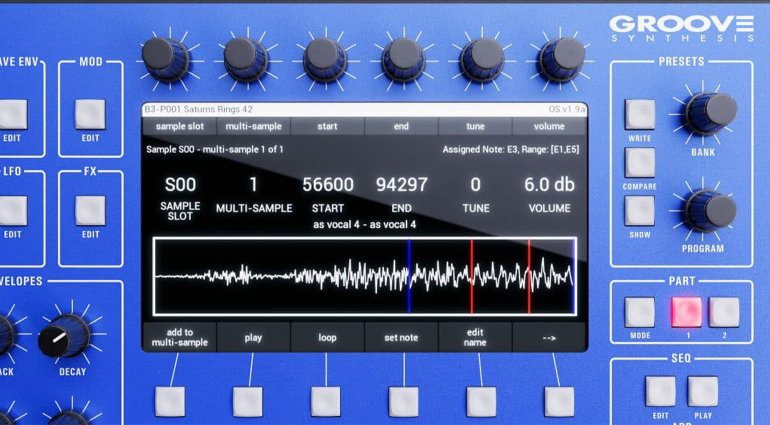

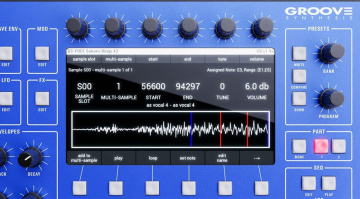

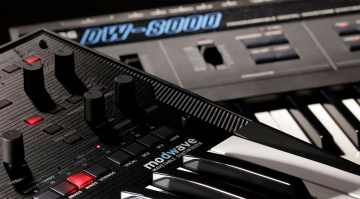
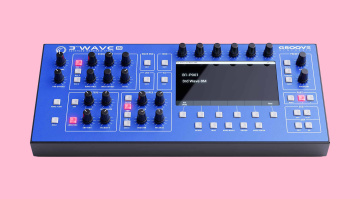
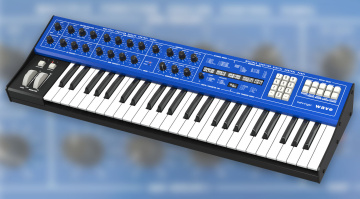
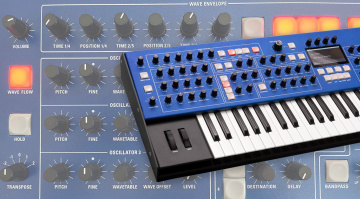
Affordable 2000€ vst player.
I just hate how this thing looks. It’s so damn sterile like medical equipment. Even the UI/screen is boring. I feel like I am getting ready for a colonoscopy just looking at it!